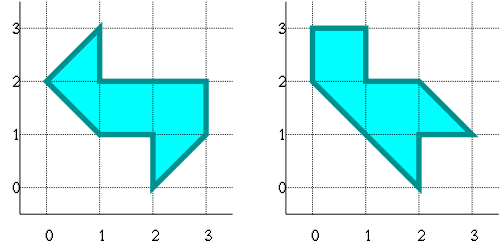A short while ago I was blogging about the classical isospectrality problem which goes back to Mark Kac’ famous question: Can one hear the shape of a drum? Some basic information about it can be found in that blog post of mine: Can one hear orientability?
The original question of Mark Kac was answered negatively by Gordon-Webb-Wolpert, in the following way: they constructed non-isometric planar domains with both the same Dirichlet and Neumann spectrum. However, these domains do not have a smooth boundary, they have corners:

Kac’ original question, if only considered for planar domains with smooth boundary, is still open. One can wonder now if there is any connection between the question for planar domains with corners and for domains with smooth boundary. The answer to this was recently provided by Nursultanov-Rowlett-Sher: https://arxiv.org/abs/2012.03366. They proved that no planar domain with corners can be isospectral to a planar domain with smooth boundary.
Thank you, Alexander, for drawing attention to our work! We actually have understood how this works for the Dirichlet boundary condition for a few years. For a popular explanation, check out: https://blog.oup.com/2015/12/drum-shape-mathematics/ The serious math (published article) is here: https://londmathsoc.onlinelibrary.wiley.com/doi/abs/10.1112/blms/bdv094 In the joint work with Medet Nursultanov and David Sher, we generalized to the Neumann and Robin boundary conditions. However, in that work, we require corners that are straight near the vertex. The method is to generalize Kac’s locality principle to the Neumann and Robin boundary conditions. This locality principle essentially means that heat flow is local for short periods of time. In more recent work, we were able to allow for corners that are only asymptotically straight near the vertex by exploiting powerful microlocal techniques: https://arxiv.org/abs/1905.00259 There are still many open problems in this field, and we hope this inspires and encourages continued mathematical investigation!